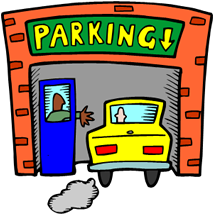Monthly Archives: February 2012

Survivor’s Guilt: Teens in Motor Vehicle Crashes
February 21, 2012
A single car crash in North Carolina last month led to the death of the driver’s twin sister.
Another news report from the past month regarding a teen who had been killed in a single vehicle car crash the teen’s girl friend was quoted as saying:
“Cameron was drinking and we got into a fight. I told him to find another ride home. I said, ‘Get out of this car, you’re being disrespectful,'” Talia said, gasping between tears and raising her arms to the sky. “Why didn’t I drive him home?”
Survivor’s guilt, which is most often associated with victims of combat, can occur in anyone who has survived any type of trauma whether they were directly involved or not. The guilt from wishing they had done something different that may have averted the event can lead to long-lasting psychological problems. The most common form of psychological trauma resulting from survivor’s guilt is Post Traumatic Stress Disorder (PTSD) which can result in life-long, debilitating problems for the victim. This is why high schools, who experience the death of one of their students, make extra counselors available to the student body immediately after the event.
If your teen has been involved in a crash in which someone died or was horribly injured or even if they were weren’t involved but were closely associated with the victim, you will need to help them through the grief process and you should be on the lookout for the warning signs of PTSD.
Grief – The grief process is something everyone who has experienced the loss of a friend or loved one must go through and it occurs in specific stages;
- Denial and Isolation.
- Anger.
- Bargaining.
- Depression.
- Acceptance.
Guiding your teen through all of the stages to acceptance, can be a long and painful process. If the guilt is left unresolved, it can lead to a multitude of psychological issues.
Don’t try to tell your teen how they should act or feel – No one can truly understand how a grieving person feels and trying to tell them their emotions are wrong or unhealthy can only compound the problem. Instead, sympathize and let him or her vent their feelings. Holding in or suppressing one’s feelings can be harmful.
Suggest that they express their grief in a creative way – One example of a creative expression of grief is the Facebook page mentioned in the first article of this newsletter. Writing a song or a poem, creating a memorial to the victim are all positive expressions of grief. Getting involved in programs to prevent future tragedies can give your teen some sense of control over events.
Watch for signs that your teen may be “numbing out” – One common expression of grief is to try to suppress the feelings by turning to alcohol or drugs. This is an especially dangerous form of expression and can only make matters worse.
Withdrawing from friends and events – Your teen my stop engaging in their usual activities or back away from friendships. This part of the denial and isolation stage is designed to prevent any future relationships and thus, the chance of losing someone else that may be close to them. To make up for the lack of relationships, your teen may turn to alcohol or drugs or withdraw into video games. Their school performance may suffer.
Grief Triggers – There will be times when reminders of the loss of their friend will be especially acute; such as anniversaries of the event, birthdays, school proms, graduation. Be aware of these triggers and be prepared to help your teen through the grief process all over again.
Talk, talk, talk, talk, talk – Trying to put the past behind you by ignoring the fact that the event happened won’t make it go away. Talking through the issues is the best form of grief expression. Be there for your teen, allow them to talk it out and listen without judging.
Don’t be afraid to seek professional counseling – Unresolved, PTSD can lead to severe depression, paranoia, isolation, and drug dependence. If left unresolved, these issues can affect future generations. Be on the lookout for warning signs and understand that the issues may be too big for you to handle. Seek professional psychological help.

Study Shows Teens with Their Own Car Have More Crashes
February 16, 2012
Two studies published in 2009 showed that teens who had to share a car and whose parents who were involved in their driving in a supportive way were far less likely to be involved in a crash or to engage in risky driving behaviors.
The studies, conducted by Children’s Hospital of Philadelphia (CHOP) and State Farm Insurance, were published in the October 2009 issue of Pediatrics. According to a news release by State Farm Insurance, the studies were based on a National Young Driver Survey of more than 5,500 teenagers in grades 9 through 11.
The first study showed that “teens who said their parents set clear rules, paid attention to where they were going and whom they were with, and did so in a supportive way were:
- half as likely to crash
- twice as likely to wear seat belts
- 71 percent less likely to drive while intoxicated
- 30 percent less likely to use a cell phone while driving
These findings are compared to teens who said their parents were less involved.”
The second study looked at teens who either owned their own car or had easy, unrestricted access to a car were twice as likely to be involved in a crash. The study showed that almost 75% of teen drivers owned or had unrestricted access to a car. 25% of teens who were the main driver of a car reported having been involved in a collision compared to just 10% of those who had to borrow a car.
On a basic level it makes sense; a teen that has to borrow a car faces the wrath of the owner if that car is damaged or destroyed. Teens who own their own car don’t feel that sense of responsibility to protect someone else’s property from harm.
These studies show the critical importance of parental involvement in a teen’s driving environment and add to data that shows Graduated Drivers Licenses for teens work to create a safer driving environment for teens.
Car crashes are the main cause of death for teenagers in the United States. According to the National Highway Traffic Safety Administration (NHTSA), teens are involved in three times as many fatal traffic crashes as all other drivers.
NHTSA figures for 2009 show:
- Traffic crashes are the leading cause of death for 15 to 20 year olds.
- 5,148 15- to 20-year-old drivers were involved in fatal crashes.
- 2,336 15- to 20-year-old drivers were killed.
- 196,000 15- to 20-year-olds were injured in motor vehicle crashes.
- 15 to 20 year old drivers make up 6.4% of the licensed drivers in the US but they account for 11% of the fatal crashes.
Many parents, especially in those households where both parents work, look forward to the day when they no longer have to transport their teen to various activities. However parents should strongly resist the urge to buy a car for the sole use of the teen; at least for the first year. According to data from the Insurance Institute for Highway Safety (IIHS) the most dangerous time for teens is the first year after receiving their driver’s license. The IIHS states that “the crash rate per mile driven is twice as high for 16 year-olds as it is for 18-19 year-olds.”
“Our data show that one of the safest decisions families can make is for parents to control access to the keys for at least the first 6 to 12 months after a teen gets his license,” says Flaura Koplin Winston, MD, PhD, study co-author and scientific director of the Center for Injury Research and Prevention at CHOP. “Our data show an alarming trend – almost three-quarters of teens have easy access to a car. Compared to teens that have to share a car, these teens are twice as likely to crash and more likely to speed and to use a cell phone while driving. When teens have to ask for the keys before taking the car, it naturally creates the opportunity for parents to have conversations with their teens about where they are going, who they will be with, and to review the house rules about driving with passengers, wearing seat belts, using cell phones, and which routes are safe.”
A dialogue should be started with the teen before they receive their learner’s license and an effective tool for setting up those rules and boundaries is the Parent-Teen Driving Contract. When parents and teens both agree on what the rules should be, the teen is more likely to take ownership of that decision.

Parking Lot Safety
February 7, 2012
Finding a convenient and safe parking spot is as much a part of operating a vehicle as driving itself. Depending on the kind of parking situation, it can be as safe as being the only vehicle in that spot, or it might even prove to be more dangerous than the road itself.
Not all parking lots are created equal, even the parking spots don’t come in one flavor, hence the need for some parking lot safety tips.
Some parking spots may be a spot on the side of the road, or somewhere above a multi-tiered structure. Some spots may be straight-in, diagonal and some may not even have guiding arrows to help you. Paying attention plays a huge part in making sure you pick a perfect place to park.
Here are some of the necessary precautions when finding the perfect parking spot:
- Are the doors locked? Are the windows rolled up? Even if you’re leaving for a couple of minutes, you should always do this.
- As much as possible, don’t leave valuables in the car. Make it a habit: if you have the detachable type of GPS or radio, always bring it with you. GPS devices may make life easier, but if stolen, it gives thieves a treasure map to your house.
- Check your phone/plug in your earphones/do errands when you’re inside where you need to be. Your full attention is required in getting out of your car to getting to the destination.
- Is there parking security? If there’s an available spot within the view of security, park there. Not all parking lots are secure.
- Be wary of strangers loitering about the parking lot. The car may be parked, but they may be after you. Notify security if there’s anything out of the ordinary.
When your errands are complete, there are other precautions to be taken:
- Have your keys ready. Fumbling about and digging inside your purse or pocket for the keys in front of your car leaves you vulnerable.
- Always remember where you parked your vehicle.
- Scan the area around your vehicle. Be aware if someone may be following you.
- Check in and around your vehicle. Someone may be hiding behind your car, in front or in the back seat.
- Once safely in your vehicle, lock up and leave.
When backing out of a space, be aware of people or vehicles moving in front or behind your vehicle. Be aware that visibility may be limited when there are bigger vehicles parked next to you. Never put yourself at risk. A parking lot is just a place where you park, not to hang out in.
Additional Tips for Vehicle Theft Prevention from Department of Transportation’s (DOT) National Highway Traffic Safety Administration (NHTSA).
